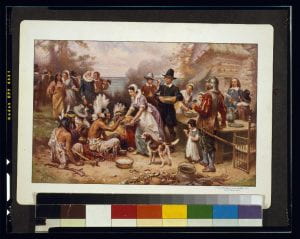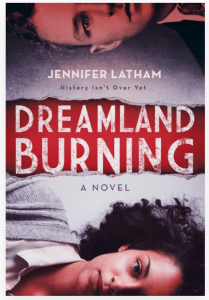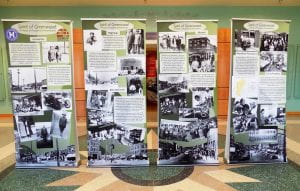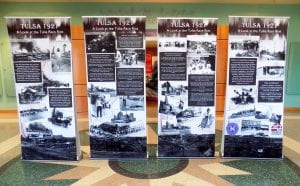

Last week we shared with you an overview of our sharing our Culturally Responsive Teaching example for Black History Month 2021, how teaching about race in the United States requires an open inquiry mindset, and you got to hear Morgan’s perspective (one of the literature teachers on the team) discuss how she also learned important lessons as she learned with the students in this unit.
This week we’ll share how the team rolled out the unit diving into the instructional design and how they used the Guided Inquiry Design Process to generate a powerful learning sequence with a lasting impact on the students.
As this year 2021 marks 100 years since this event took place, we thought this might be a unit other teachers across the county would want to try out. The teachers who designed it agreed to provide their unit design, as well as this blog explanation of what they did, so that you might be able to ADAPT this for your students. All classes are different and you’ll need to think about your population, what you’ll want to highlight and what might need more time and attention.
So we’ll start today with the collaborative team, and work through how they designed and implemented the first two phases of the process to open students to study and learn about the events in Tulsa in 1921.
This team worked closely together and with their librarian as they wove in and out of phases, teaching mini-lessons on content, information literacy, and how to accomplish certain tasks. They frequently debriefed with each other on how it was going in all the classes as every 8th grader in the school went through this unit, 250 students in total.
You might be surprised to hear about language arts teachers teaching social studies content! Well, I was surprised too, but I often find that teachers recognize that teaching language arts skills in a vacuum is not near as interesting as when it is tied up with some interesting content. As a result, smart Language Arts teachers go for the content even though it’s not part of what they are required to teach. Social Studies teachers- take note! You could pair up with a language arts teacher and get double time on your content! Talk about not being able to cover all the content- imagine how much you could do when collaborating. (That is a post for another day!)
At this school, all 8th grade students have two English Language Arts periods during the day, one for literature and the other for language arts. As a team, the teachers collaborate on their efforts to leverage even more time with students as they join the work to make the skills more meaningful as the students apply the literature lessons to the skills content. Add the librarian into the mix on this unit and the work is distributed among all the team members in a fluid meaningful way! Win, win, win!
You’ll see, as the unit is described, that the students flow from literature class where they read the book Dreamland Burning to the library where they learn information literacy skills then to the language arts class where they work on writing that occurs as students need either to work on skills or learn more from information.
The team decided on the concept of assumptions as a way to make learning about the Tulsa Race Massacre not stay in the past but help students to recognize within themselves the potential for racism, learn about how assumptions can be damaging and even cause great conflict and violent behavior.

So, the Open began with a Quick Write reflection about a time someone made an assumption about them.
From there, they chose a familiar and famous painting of Thanksgiving as a way to examine assumptions a little more deeply. Through the use of the Visual Thinking Strategy
https://www.loc.gov/item/2001699850/

Thanks to our connection to museum educators via the contribution by Ann Caspari on the GId author team we often introduce the strategy of VTS to teachers. It’s a great strategy and can be used in so many ways. Using it in the Open with an image that a lot of students could relate what they have learned about Thanksgiving to accomplished 3 things
Each class analyzed the image as a large group first just to understand and then thinking about the assumptions revealed in the painting. This was an excellent piece to look at assumptions we US Americans have about Thanksgiving, Pilgrims, Native Americans, their role, and on and on. Reflections in the Inquiry Journal after these conversations helped the students to think about the connections they were m
aking to assumptions in their own lives.
From there, the classes moved into the Immerse phase with curiosity about assumptions as they wondered where this would go next.
 During the literature classes, they began to read the text Dreamland Burning. This book is written in two voices. One tells the tale of a young girl living in modern day Tulsa and the other is of a boy in Tulsa in 1921. The stories eventually intertwine as the events of the massacre are revealed.
During the literature classes, they began to read the text Dreamland Burning. This book is written in two voices. One tells the tale of a young girl living in modern day Tulsa and the other is of a boy in Tulsa in 1921. The stories eventually intertwine as the events of the massacre are revealed.
Students began with this text as they continued to think about assumptions in the mystery taking place in the book as well as in race relations in Tulsa from the perspective of 1921.
Rather than just “teach the book”, which has complex literary devices, complex characters and events that will send you reeling, the team paired the reading with learning about the real events of the Tulsa Massacre from documentaries and the museum panels and exhibitions.

Greenwood Panels
The double English periods paid off here, because while the literature classes were reading and interpreting the novel, in the English Language Arts classes they began to learn about the Tulsa Massacre of 1921. Through all of this together, the students had opportunities to think about the event from multiple perspectives and begin to wonder what happened and why.
The teachers paired that with Inquiry Journal reflections across the book reading, as students learn from the documentaries, and analyze images from 1921 again using the VTS strategy and beyond. (That link takes you to an amazing resource created by

Tulsa Historical Society Panels
the Tulsa Historical Society for educators.)
But it was during the viewing of a documentary about the event that the team just had to stop. Click the link below to listen to the teachers talk about what happened next in a Vimeo Video.
And next time on the blog, we’ll see where where the learning went from here.
Dr. Leslie Maniotes
Author Guided Inquiry Design
I have such respect for these teachers – we learn from them because they are courageous, willing to share their Mistakes. These are powerful successes in fact — Bravo!
I read Dreamland Burning in 2017 and loved it. I immediately shared it with one of my English teachers who was surprised I had never heard about the Tulsa Race riots. We are now collaborating on a GID unit on activism. Leslie shared the work that these Oklahoma educators did with this unit, and I have been devouring their blog posts. Great job Shawnee, OK!!! Continue the great work.
Another moving read that I am going to use with my 7th grade guided Inquiry unit is All Thirteen. I knew the ending, and I still cried through it!!
Soontornvat is an amazing writer. She includes just enough parenthetical non-fiction asides to help the reader to connect more fully to the events and culture of the Thai people.